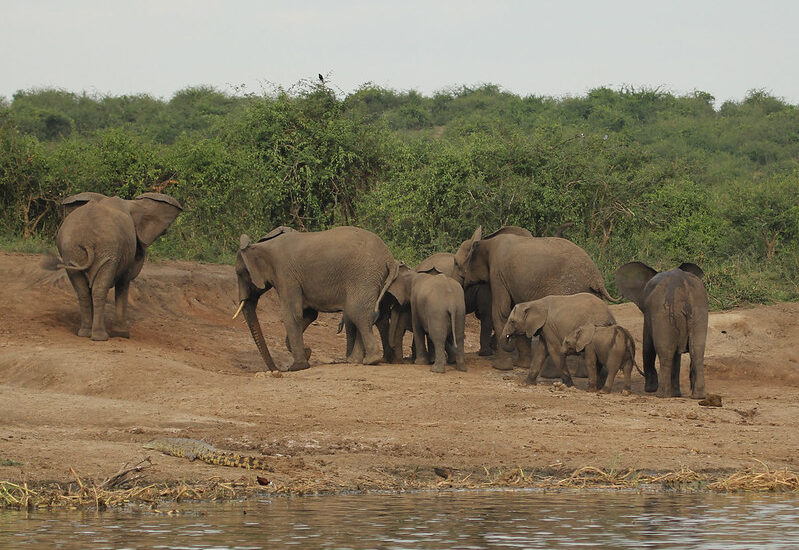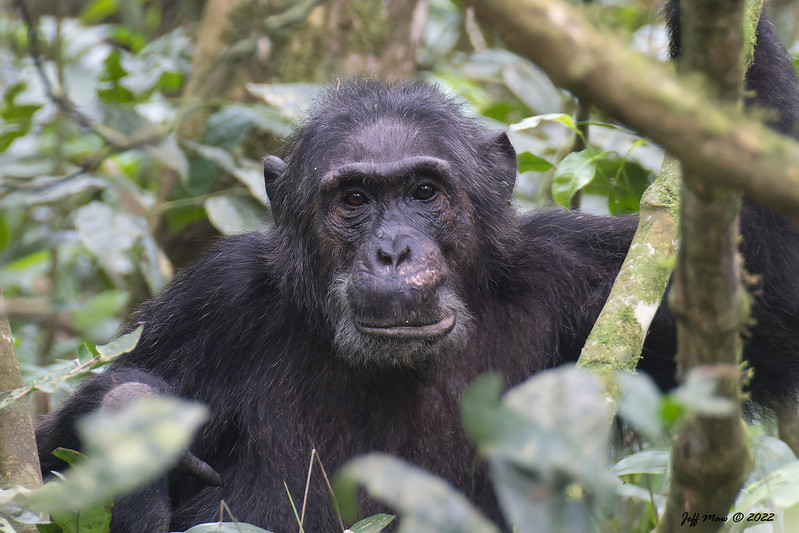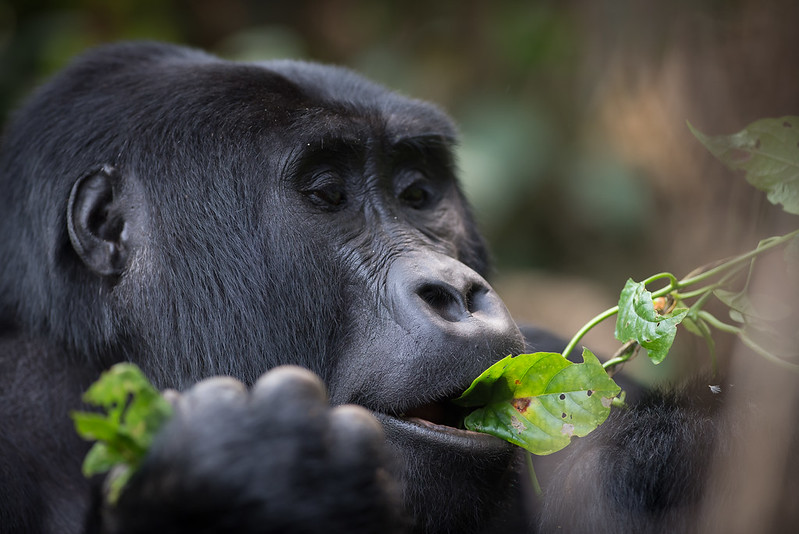Uganda Safari Adventure trips. Adventure safaris in Uganda, Join us on a safari in Uganda…
What is the Cheapest Way to Go Gorilla Trekking?
What is the Cheapest Way to Go Gorilla Trekking?
Gorilla trekking is a once-in-a-lifetime adventure for many wildlife enthusiasts, nature lovers, and conservation supporters. The experience of trekking through dense rainforests or misty mountain slopes to observe the world’s most endangered primates in their natural habitat is undoubtedly a powerful and transformative experience.
However, the cost of a gorilla trekking experience can be a significant hurdle for many travelers. Gorilla permits, accommodation, transport, and other associated costs can add up quickly, especially in well-known destinations like Uganda, Rwanda, and the Democratic Republic of Congo (DRC).
In this article, we will explore the cheapest ways to go gorilla trekking without compromising on the quality of the experience. Whether you are traveling on a budget or simply looking for ways to cut costs, we’ll share valuable tips and strategies for planning an affordable yet unforgettable gorilla trekking adventure.
1. Choosing the Right Country for Gorilla Trekking
The cost of a gorilla trekking experience largely depends on the country you choose to visit. While gorilla trekking is available in Uganda, Rwanda, and the Democratic Republic of Congo (DRC), each country offers different pricing, making some more affordable than others.
Gorilla Trekking in Uganda:
- Permit Costs: Uganda offers one of the most affordable gorilla trekking options. As of 2024, a gorilla trekking permit in Bwindi Impenetrable Forest or Mgahinga Gorilla National Park costs around $800 USD per person.
- Accommodation: Accommodation in Uganda ranges from budget lodges to luxury hotels, with budget options starting at $20-50 USD per night.
- Transport: Uganda’s national parks are relatively accessible by road, and budget travelers can use shared taxis, buses, or minivans for transport, significantly reducing transportation costs.
Gorilla Trekking in Rwanda:
- Permit Costs: Rwanda, specifically Volcanoes National Park, is famous for its mountain gorilla trekking, but the cost of permits is significantly higher. As of 2024, a gorilla trekking permit in Rwanda costs $1,500 USD per person.
- Accommodation: Rwanda offers a wide range of accommodation, with budget options generally starting around $50-80 USD per night, although luxury options can be quite expensive.
- Transport: The cost of transport to Rwanda’s Volcanoes National Park can also add up, especially if you are traveling from Kigali, as it’s approximately a 2-3 hour drive. Public transport or shared rides may help reduce costs.
Gorilla Trekking in the Democratic Republic of Congo (DRC):
- Permit Costs: The DRC is the most affordable destination for gorilla trekking, with a permit to trek in Virunga National Park costing only $400 USD per person as of 2024.
- Accommodation: Budget accommodation in DRC is available for around $20-50 USD per night, although more basic than options in Rwanda or Uganda.
- Transport: Transport to Virunga National Park is more complicated, requiring flights or overland travel to Goma, the nearest town. Shared transport options or public buses can keep costs down.
Conclusion: Uganda is the Cheapest Option
If you are looking for the cheapest destination for gorilla trekking, Uganda offers the best value for money. With relatively affordable permits, low-cost accommodation, and more budget-friendly transport options, Uganda presents the most cost-effective way to go gorilla trekking, especially for those on a tighter budget.
2. Opt for Group Treks
Many gorilla trekking companies offer the option to join a group trek rather than booking a private tour. Group treks can significantly reduce the cost of your experience, as the expenses for guides, transport, and permits are shared among all participants.
Benefits of Group Treks:
- Reduced Costs: Group treks typically cost much less than private treks, as the price is divided among all members of the group. This can help you save on both the permit costs and the cost of the guide.
- Social Experience: Joining a group trek allows you to meet other like-minded travelers, adding to the excitement and camaraderie of the adventure.
- Increased Availability: Some trekking permits can be scarce, especially during peak seasons. Joining a group trek may give you access to permits that are sold out for individual treks.
Things to Consider:
- Group Size: The size of the group can vary, with some tours offering smaller groups (6-8 people) while others might have larger groups. It’s important to inquire about group size before booking.
- Guides and Runners: Group treks may have fewer opportunities for personal interaction with the guide, though you will still be accompanied by an experienced tracker.
3. Book in Advance and During the Off-Season
The price of gorilla trekking permits can fluctuate throughout the year, with high demand during peak seasons driving up the costs. Booking your trek well in advance can help secure permits at lower prices, particularly during off-peak times when fewer tourists are visiting.![]()
Best Times to Visit for Lower Costs:
- Uganda: The low season for gorilla trekking in Uganda typically runs from April to early June and November. During these months, you can expect fewer tourists and sometimes lower permit prices or special offers from tour operators.
- Rwanda: Rwanda’s peak season generally coincides with the dry months, from June to September. To save money, consider traveling during the rainy season (March-May and October-November).
- DRC: The Democratic Republic of Congo sees the least amount of tourism, and as a result, prices are already quite low compared to Rwanda and Uganda. However, it’s still advisable to book during the off-peak months for better deals on accommodation and tours.
Benefits of Booking in Advance:
- Availability of Permits: Gorilla trekking permits are often sold out months in advance, especially in popular destinations like Rwanda and Uganda. Booking early ensures that you secure your spot.
- Cheaper Flights: If you book your flights well in advance, you can often find lower airfare prices. Additionally, booking transport options early can reduce overall travel costs.
4. Choose Budget Accommodation and Local Lodges
One of the easiest ways to save money on your gorilla trekking adventure is to choose budget-friendly accommodation. While luxury lodges and high-end hotels are available near gorilla trekking destinations, they can significantly increase the overall cost of your trip.
Affordable Lodging Options:
- Uganda: Budget lodges in Bwindi Impenetrable Forest and Mgahinga Gorilla National Park typically start at $20-50 USD per night. You can also consider camping in designated areas for even cheaper options.
- Rwanda: While accommodation in Rwanda can be more expensive, there are still budget-friendly options near Volcanoes National Park. Dormitory-style rooms and guesthouses offer a more affordable alternative to luxury lodges.
- DRC: Accommodation in DRC is the least expensive of the three countries, with basic lodges and campsites available for as little as $20-50 USD per night.
Tips for Budget Accommodation:
- Book Early: Budget options can fill up quickly, especially during peak seasons. It’s a good idea to book accommodation well in advance.
- Consider Shared Accommodation: Look for guesthouses or lodges that offer shared rooms or dormitory-style accommodation to reduce costs.
- Self-Catering: Some budget accommodations offer self-catering facilities, allowing you to cook your own meals and save money on food.
5. Use Public or Shared Transport
Traveling to gorilla trekking destinations can be one of the most expensive parts of your trip. To save money, consider using public transport or shared rides to get to your destination instead of hiring private vehicles or booking expensive flights.
Public Transport Options:
- Uganda: In Uganda, you can use buses or shared minivans (called matatus) to get to places like Kabale (for Bwindi Impenetrable Forest) or Kisoro (for Mgahinga). These options are inexpensive and commonly used by both locals and tourists.
- Rwanda: In Rwanda, buses are available from Kigali to Volcanoes National Park, though shared transport options like private shuttles are also affordable for groups of travelers.
- DRC: Shared transport in DRC, including buses and taxis, is available to Goma, the nearest town to Virunga National Park.
Why Use Public or Shared Transport:
- Significantly Lower Costs: Public and shared transport options are much cheaper than hiring private vehicles.
- Cultural Experience: Traveling with locals can give you a unique cultural experience and insight into daily life in these countries.
6. Book Through a Local Tour Operator
While it might seem tempting to book your trek directly with the national park authorities, booking through a local tour operator can often be cheaper. Local operators can help you navigate the logistics, including permits, transport, and accommodation, at lower costs than booking everything independently.
Benefits of Local Tour Operators:
- Local Knowledge: Local operators have insider knowledge of the area and can recommend the most affordable options for lodging, transport, and trekking.
- Package Deals: Many operators offer budget-friendly packages that bundle permits, transport, and lodging, which can save you money in the long run.
- Discounts and Deals: Local operators often have access to special deals or discounts that may not be available to individual travelers.


